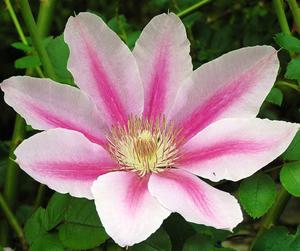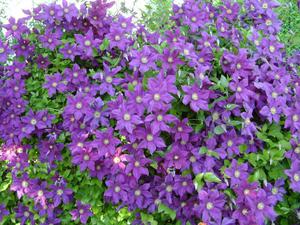Clematis is one of the most famous plants on our planet. To date, it is known about 14 species that are represented in the wild. Many of them have a woody stem, but there are also varieties that are grown as herbaceous plants. In recent years, breeders have managed to develop approximately 300 garden varieties that are hybrid.
An adult clematis looks like a liana, decorated with flowers of different colors. For gardeners, they are interesting as an element of landscape design that can be used to decorate flower beds, fences or gazebos... As a rule, shoots are used to propagate these perennials. However, at the same time, there are often those who wish to grow clematis from seeds. However, there are some subtleties here, since in relation to certain varieties it is necessary to vaccinate.
Content
How to grow clematis from seeds?
Planting and care, carried out taking into account the key features of the shrubs, allows them to achieve that they manage to form a well-developed root system in a few weeks and please the owner with delicate flowers in the first year. However, novice gardeners do not favor the method of propagating clematis from seeds, since they are not ready to spend a lot of time and effort on this procedure. Most often they grow clematis from young seedlingspurchased in stores.
However, from almost any clematis, you can get several dozen well-developed seedlings, for which it is enough to dig in the shoots with earth. Therefore, among knowledgeable gardeners, the most popular method of reproduction by layering. It is recommended to carry out this procedure in early spring before flowering. Then you can get well-developed shrubs already before the first frost. The same growers who decide to choose a seed propagation method will have to make a decision: to sow seeds directly into the ground or into special containers in which young shoots will grow during the winter.
Reproduction of various varieties
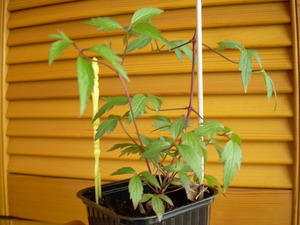 In order not to have problems with the cultivation of clematis, it is necessary to use small-flowered varieties, which in their properties are as close as possible to the wild ones. It is not recommended to use complex hybrids for growing, as this significantly reduces the chances of getting strong and healthy plants from seeds. Moreover, there are such large-flowered varieties of clematis, which are not possible to grow indoors. You can get them only by contacting nurseries, where they are offered to everyone in the form of seedlings or young shrubs.
In order not to have problems with the cultivation of clematis, it is necessary to use small-flowered varieties, which in their properties are as close as possible to the wild ones. It is not recommended to use complex hybrids for growing, as this significantly reduces the chances of getting strong and healthy plants from seeds. Moreover, there are such large-flowered varieties of clematis, which are not possible to grow indoors. You can get them only by contacting nurseries, where they are offered to everyone in the form of seedlings or young shrubs.
Clematis Manchu
Most often, in temperate climates, Manchurian clematis is grown. It is quite simple to get strong seedlings from the seeds of this variety, and subsequently well-developed adult bushes, since in its properties it practically does not differ from wild-growing relatives. This variety is very resistant to negative temperatures, and even having a small size and discreet color of flowers, this plant can decorate any site.
Clematis Tangut
Florists who are not indifferent to bright bells should turn their eyes to Tangut Clematis. This could be, for example, "Love Radar". Although it can be difficult to grow this variety from seeds, this problem can be solved if desired. For flower growers, this variety is interesting due to the fact that it tolerates low temperatures well, blooms for a long time, and also provides the opportunity to enjoy its flowering even indoors after transplanting into pots or tubs.
The Tangut clematis differs in that, as it grows up, it grows into a climbing liana. Therefore, in order to enjoy his flowers, he will need to establish a reliable support. You can enjoy the sight of yellow bells at the end of May. Moreover, until the fall, these flowers can bring great joy not only to the gardener, but also to those around them.
Helios variety
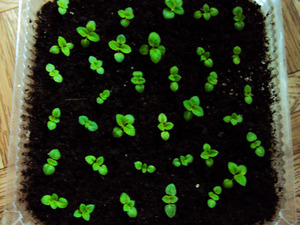 Among cold-resistant varieties, Helios deserves special attention. For many growers, this variety is one of the most attractive. However, you need to take into account the following point: before you receive an adult clematis, it will have to be grown indoor or indoor... This is due to the fact that only adult plants tolerate low temperatures well.
Among cold-resistant varieties, Helios deserves special attention. For many growers, this variety is one of the most attractive. However, you need to take into account the following point: before you receive an adult clematis, it will have to be grown indoor or indoor... This is due to the fact that only adult plants tolerate low temperatures well.
You can also grow clematis with large double flowers. Any gardener who decides to plant the seeds of this plant will definitely be able to wait for the shoots. However, you need to be prepared for the fact that, having reached an adult state, these clematis will no longer demonstrate the beauty that the mother bush possesses. To eliminate such differences, you will have to carry out a complex vaccination. Therefore, if you do not want to face similar problems, it is better to buy ready-made shrubs in advance.
How and when are the seeds harvested?
For different varieties of clematis, the favorable moment for collecting seeds comes at different times of the year. This can be done both in summer and autumn. If you set out to grow clematis from seeds, then the first thing for you is have to collect seeds and prepare them accordingly. Seeds of different varieties of clematis differ in both appearance and size. At the same time, both large and medium and small seeds can form in one shrub.
Therefore, when you collect seeds from the selected clematis, you must first sort them by size. Large to medium sized seeds are best used. In order not to risk and not waste time, it is recommended to discard small seeds immediately. However, you can save yourself from time-consuming work if you purchase planting material in the store.
Then you don't have to waste time sorting. Sowing clematis seeds can be planned in spring or autumn. In the first case, they are planted in open ground, and in the second, in a greenhouse. Before sowing, a number of measures are necessarily carried out in relation to seeds, one of which is stratification. It allows increase seed germination, endowing seedlings with increased resistance to diseases.
If you plan to sow seeds in early spring, you just need to create optimal storage conditions for the seeds. To do this, they need to be kept in a dark place where the temperature should be maintained within + 5 degrees. If you plan to sow seeds in the fall, it is recommended to let them sit in the refrigerator for about two to three weeks.
As a result of this treatment, you will create the most natural conditions for the seeds, because usually in the summer or right at the beginning of autumn, the seeds fall into the soil, where, under cover of foliage and snow, they winter.
Soil and watering
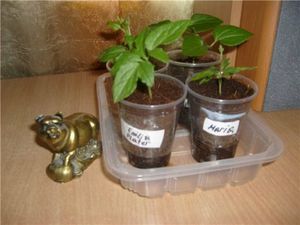 If you want to get clematis seedlings in early spring, then it is recommended to carry out sowing seeds in special boxes... With the arrival of spring, they can be taken out into the street, and until that moment they are kept on a windowsill or loggia. You can only get strong seedlings if the boxes are filled with nutritious potting soil. To prepare it, you must take:
If you want to get clematis seedlings in early spring, then it is recommended to carry out sowing seeds in special boxes... With the arrival of spring, they can be taken out into the street, and until that moment they are kept on a windowsill or loggia. You can only get strong seedlings if the boxes are filled with nutritious potting soil. To prepare it, you must take:
- humus;
- sand;
- land;
- ash.
Usually, after planting, the seeds germinate over a period from 3 weeks to 3 months, which is determined by the variety used and the conditions that are maintained indoors. During this time, it is important to provide proper care: keep the soil moist, avoiding stagnant moisture.
If you have never sowed clematis seeds before, then it would be best if you choose Manchurian clematis. You can get seedlings from it with a high degree of probability, even if you do not have experience in growing these plants. Subsequently, when you become familiar with the important nuances of growing, you can use seeds of more capricious varieties as planting material.
During sowing, it is recommended to place seeds at a depth of 2-3 times the size of the seeds. On top of them it is recommended pour clean river sand and slightly compact the soil. The sand will help the seeds germinate much faster.
Transfer to soil
Also, sowing clematis seeds can be done in the fall. In this case, by the middle of spring, they will reach the age that they can be transplanted to a permanent place. However, for this you need to choose the moment when the last frosts will pass. After all, young seedlings, regardless of the variety, do not tolerate cold snaps.
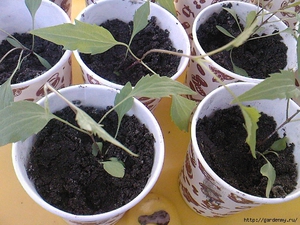 when choosing a place for planting, it must be borne in mind that many varieties are accustomed to growing in conditions of maximum light. At the same time, it is recommended to provide shade for their root part;
when choosing a place for planting, it must be borne in mind that many varieties are accustomed to growing in conditions of maximum light. At the same time, it is recommended to provide shade for their root part;- when growing clematis, you need to remember that these are climbing plants, so you cannot do without reliable support;
- it is recommended to place plants in an area that is well protected from the wind. After all, drafts will also not benefit these plants.
If you are going to sow seeds in the spring, then proceed from the fact that the seedlings will reach a state sufficient for transplanting to a permanent place only in the fall. You can take the risk and continue to grow young shrubs in boxes during the winter. However, if you want to enjoy their bloom in spring, then you can land in the ground in autumn... But you will have to create a good shelter for them so that they do not die from the winter cold. You can use straw or plastic for this. The choice of a specific material will be determined by the conditions of a specific region.
Graft
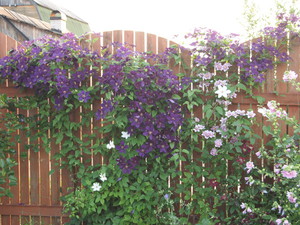 Having set out to grow clematis from seeds, gardeners often try to immediately get plants with large double flowers. However, not everyone is ready to take such a risky step, therefore they act much easier and purchase shrubs. But if the gardener has sufficient experience and is familiar with the rules of care, then he can do otherwise. In this case, he needs to understand one important the rule of growing capricious varieties from seeds: they will definitely require vaccinations for more resistant species.
Having set out to grow clematis from seeds, gardeners often try to immediately get plants with large double flowers. However, not everyone is ready to take such a risky step, therefore they act much easier and purchase shrubs. But if the gardener has sufficient experience and is familiar with the rules of care, then he can do otherwise. In this case, he needs to understand one important the rule of growing capricious varieties from seeds: they will definitely require vaccinations for more resistant species.
- it is recommended to carry out this procedure in pots, using a jar as a shelter. After waiting for the cuttings to grow together, it can be removed;
- it is possible to plan the planting of grafted clematis only for next spring;
- grafting of plants can be carried out by any of the available methods. The most important thing here is that this operation is carried out as quickly as possible in order to exclude the drying out of the cut site.
Conclusion
Given the high popularity of clematis, surely every experienced florist at least once dreamed of growing it on his site. However, this is not so difficult to do, given that today there are many varieties from the seeds of which you can get with minimal care. disease resistant and the weather conditions of the plant.Before sowing seeds, it is very important to decide exactly when you want to receive seedlings for transplanting to a permanent place. However, in any case, it is recommended to replant young seedlings in the spring. This will increase the likelihood of plant survival, from which full-fledged clematis will subsequently form.
